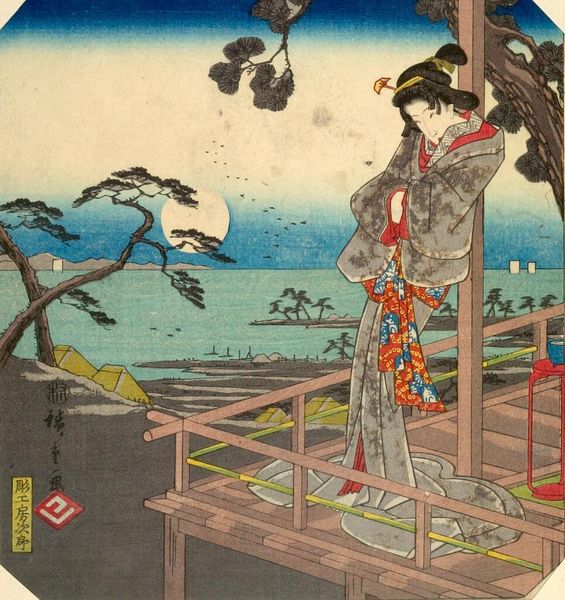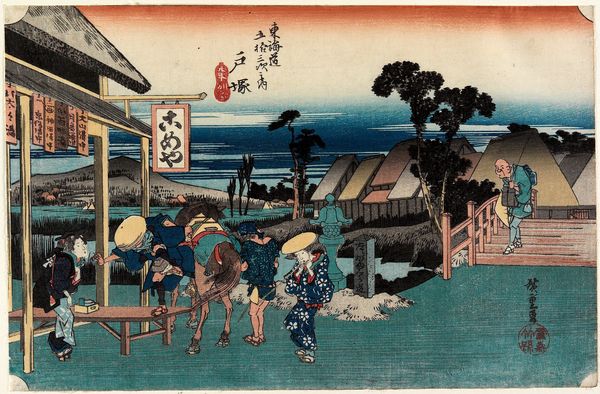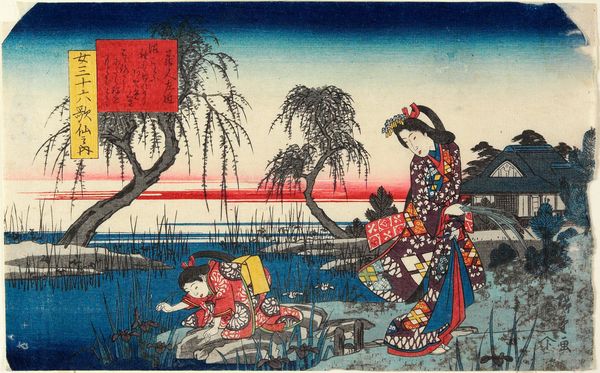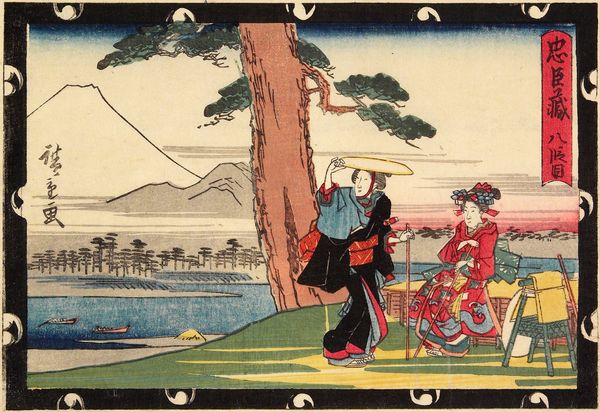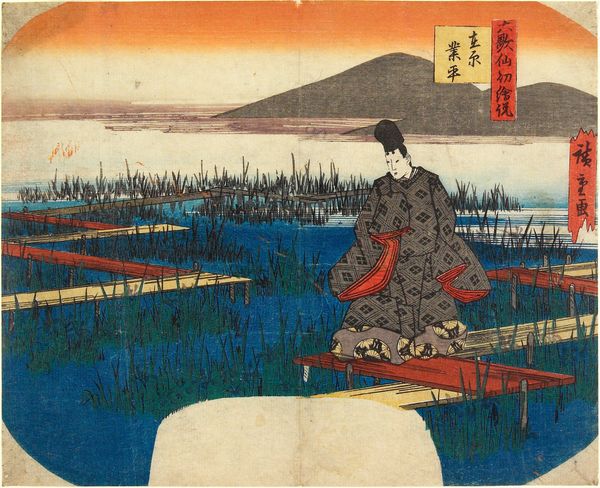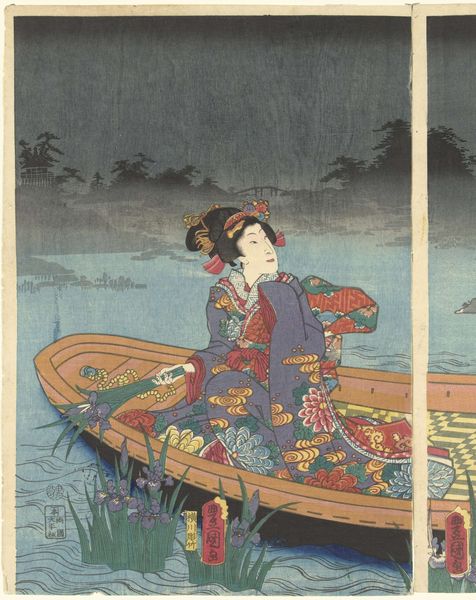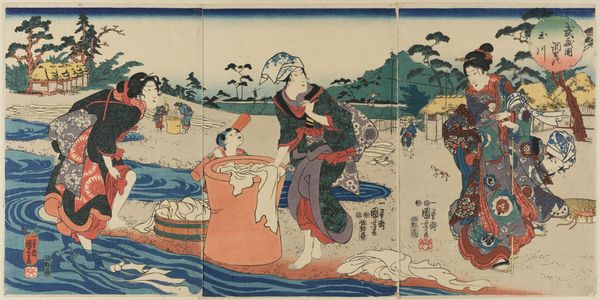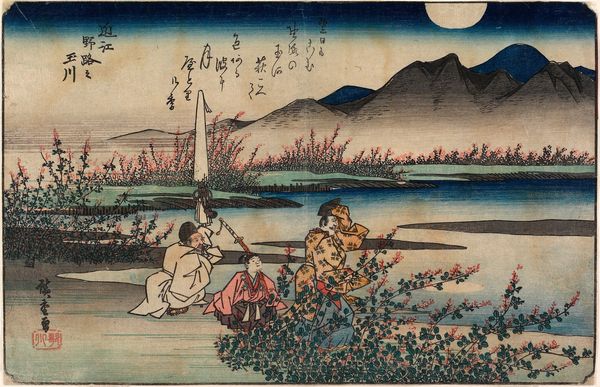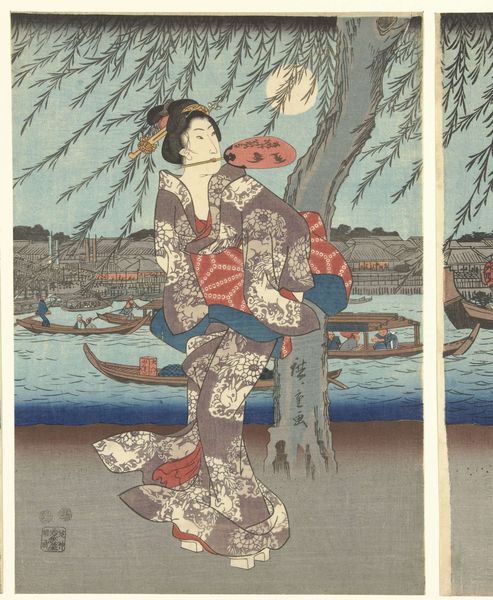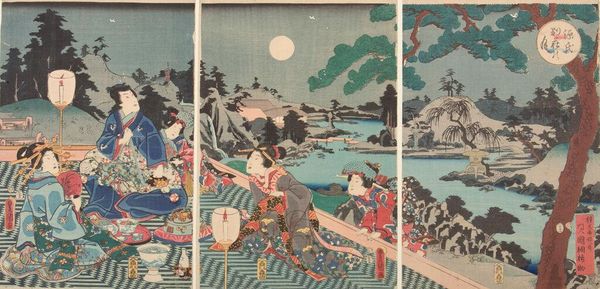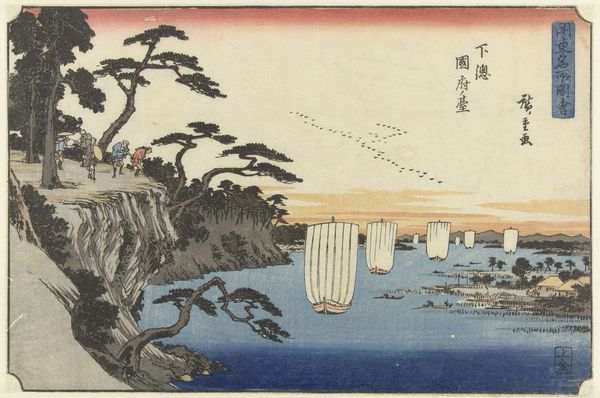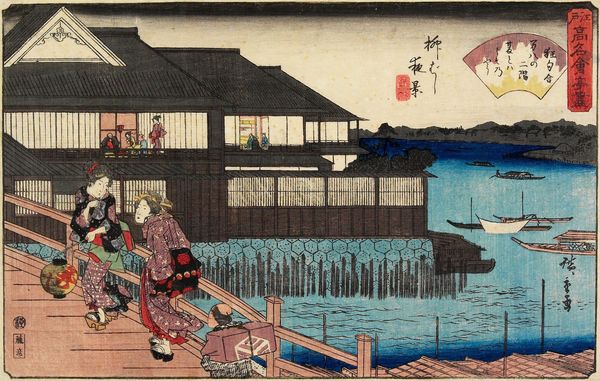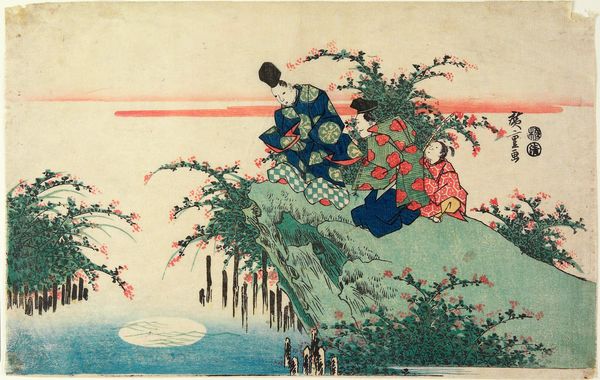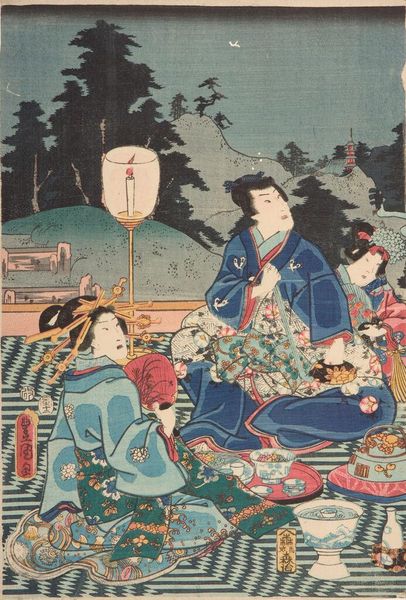
print, ink, woodblock-print
# print
#
asian-art
#
landscape
#
ukiyo-e
#
figuration
#
ink
#
woodblock-print
Dimensions: 6 3/4 × 10 7/8 in. (17.1 × 27.6 cm) (image, sheet, uchiwa-e)
Copyright: Public Domain
Editor: Here we have Utagawa Hiroshige’s "Murasaki Shikibu," a woodblock print from around 1843 to 1846. The scene is serene, almost melancholic. A lone figure gazes out at the water. What do you see in this piece, especially considering its historical context? Curator: What strikes me is how Hiroshige uses landscape to comment on female authorship and agency within a patriarchal society. Murasaki Shikibu, author of *The Tale of Genji*, becomes a symbol. The print isn’t just a beautiful scene; it's a statement about a woman's intellectual space and its limitations. Editor: Limitations? Curator: Yes. Think about the framing: she's on a veranda, looking out. Is she confined? Or is she contemplating the world that informs her writing? Consider, too, the male-dominated art world of Ukiyo-e. How does Hiroshige, by choosing a female literary figure, subtly challenge those conventions? Editor: That's a perspective I hadn't considered. So the landscape isn't just scenery; it's part of a commentary. Curator: Precisely. The vibrant yet subdued colors, the placement of the figure in relation to the vast landscape—it all speaks to the complex relationship between women, nature, and creative expression within 19th-century Japan. Do you notice the contrast between the vivid colors of the leaves versus the more muted figure and background? Editor: I do now. It emphasizes her isolation, perhaps? I’ll never look at a landscape the same way again! Thank you for broadening my view. Curator: And thank you for your curiosity. These prints encourage us to reconsider our relationship with art and history.
Comments
minneapolisinstituteofart almost 2 years ago
⋮
This print is part of a series featuring the so-called Thirty-Six Immortal Poetesses, a celebrated group of ancient women poets that includes Murasaki Shikibu, the author of The Tale of Genji. The red cartouche at upper right includes one of her poems, which reads, “Ever since the evening / my dear friend / turned to smoke, / even the name of Shiogama Bay / brings back memories.” In this poem, Murasaki draws a link between the cremation of a friend and the smoke that hangs over the famous northeastern salt-making town of Shiogama. For this print, Utagawa Hiroshige reimagined the typical depiction of Murasaki on a temple veranda overlooking Lake Biwa (where she is said to have begun writing The Tale of Genji), replacing Lake Biwa with a scene of smoke rising from huts along the coast of Shiogama.
Join the conversation
Join millions of artists and users on Artera today and experience the ultimate creative platform.
